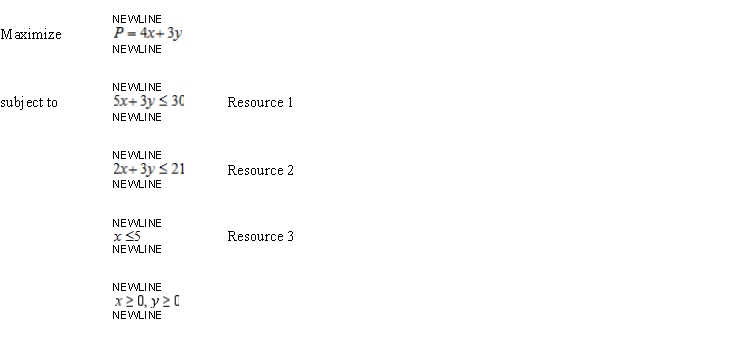Use the method of corners to solve the problem. 
A) x = 5, y = 5, P = 2 

 The first two constraints are binding; the third is nonbinding.
The first two constraints are binding; the third is nonbinding.
B) x = 3, y = 5, P = 27 

 The first two constraints are binding; the third is nonbinding.
The first two constraints are binding; the third is nonbinding.
C) x = 3, y = 0, P = 27 

 All constraints are nonbinding.
All constraints are nonbinding.
D) x = 0, y = 5, P = 27 

 All constraints are binding.
All constraints are binding.
Correct Answer:
Verified
Q195: Soundex produces two models of clock radios.
Q196: A farmer plans to plant two crops,
Q197: A company manufactures two products, A and
Q198: Ace Novelty wishes to produce two types
Q199: Soundex produces two models of clock radios.
Q201: You are given a linear programming problem.Use
Q202: Deluxe River Cruises operates a fleet of
Q203: Soundex produces two models of clock radios.
Q204: You are given a linear programming problem.
Q205: Kane Manufacturing has a division that produces
Unlock this Answer For Free Now!
View this answer and more for free by performing one of the following actions

Scan the QR code to install the App and get 2 free unlocks

Unlock quizzes for free by uploading documents